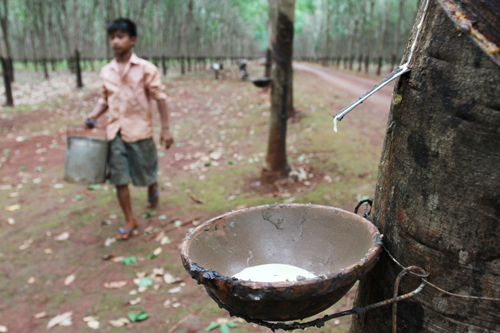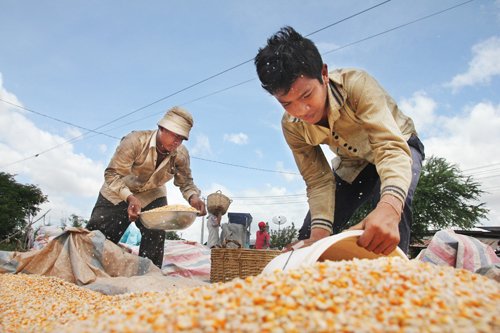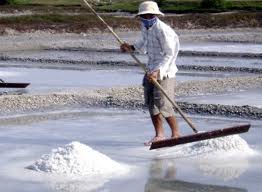Rubber to give economy a bounce
Rubber to give economy a bounce
Cambodian officials say they will focus on nine different sectors in a bid to diversify and ensure continued national economic growth.

Among the nine priorities, rubber will play a crucial role in Cambodia’s trade integration strategy.
After opening a workshop on Cambodia’s trade strategy for the coming five years, Minister of Commerce Cham Prasidh said the national trade strategy had previously focused primarily on the garment sector, but officials hoped to shift the focus to other sectors, as labour strife could deter potential investors.
“Our economy cannot rely on only one sector,” he said. “When strikes have erupted in the past, manufacturers have left Cambodia, leaving half a million workers jobless.
“So whatever sector is important for us, we have to deploy workers to those sectors. By focusing on just a single sector, we can put our economy at risk.”
Though the Cambodian economy is still largely dependent on the garment sector, officials say they hope agricultural production can also boost the economy.
“Besides the garment sector, the next priority among the nine is rubber, followed by cassava, which also plays an important role in poverty reduction,” he explained.
He said Cambodia has provided tens of thousands of hectares to the private sector for rubber plantations in provinces such as Preah Vihear, Kampong Thom, Siem Reap and other northeastern provinces.
“Now rubber planting does not only exist in those provinces, but also in provinces along the coastline,” he said. “In general, the natural rubber market still commands a high in price.
“Rubber supports a lot of industrial sectors, including car spare parts. We see the market is long term.”
In a speech on the economy in February, Prime Minister Hun Sen noted the importance of rubber to the future of Cambodia’s economy.
“In achieving our commitment to the diversification of agricultural production, rubber in particular is proving to be an increasingly valuable industrial export crop for Cambodia,” he said.
Ly Phalla, director general of the general directorate of rubber plantations at the Ministry of Agriculture, Forestry and Fisheries, said in early December of last year that at the end of October 2012, Cambodia had nearly 260,000 hectares of rubber plantations. State-owned plantations cover over 51,600 hectares, or 20 per cent of the total, while land concessions covered over 98,300 hectares, or 38 per cent.
He predicted that by the end of 2015, Cambodia would produce 100,000 tonnes of rubber annually.
At the end of 2012, the rubber production was at 65,000 tonnes.
Prasidh said that the development triangle area – an area developed in partnership with Laos and Thailand – covering 13 provinces across all three countries would offer great opportunities for mass rubber export and production.
“We will use this area to join hands and produce high volumes for export,” he said.
“We aim to attract factories to produce car parts made from rubber like tyres.”
phnom penh post

















